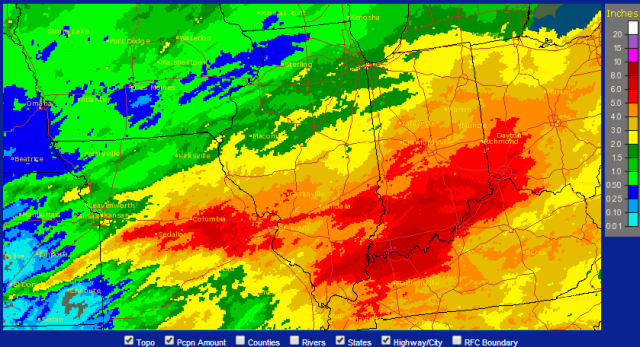Here are two highlights for today:
U.S. Drought Monitor
After some concerns of dryness over the last several months in parts of Illinois, the conditions across Illinois were much wetter in the last two weeks. Rainfall totals were especially heavy south of Interstate 72 and ranged from 3 to 8 inches or more (see map below).
The U.S. Drought Monitor has removed all areas of drought in Illinois and greatly reduced the region of “abnormally dry” conditions.
Climate Prediction Center El Niño Forecast
The NOAA Climate Prediction Center issued a new El Niño Watch today, saying …
While ENSO-neutral is favored for Northern Hemisphere spring, the chances of El Niño increase during the remainder of the year, exceeding 50% by summer.
This reflects a slightly stronger chance of El Niño arriving this summer than mentioned in their post a month ago. However, they caution that there is still a great deal of uncertainty in the timing and strength of the El Niño and recognize that the skill in forecasting El Niño this early in spring is low. This is a less certain forecast than the one issued by the Australian Bureau of Meteorology earlier this week, indicating that there was a greater than 70 percent of an El Niño event by June.







